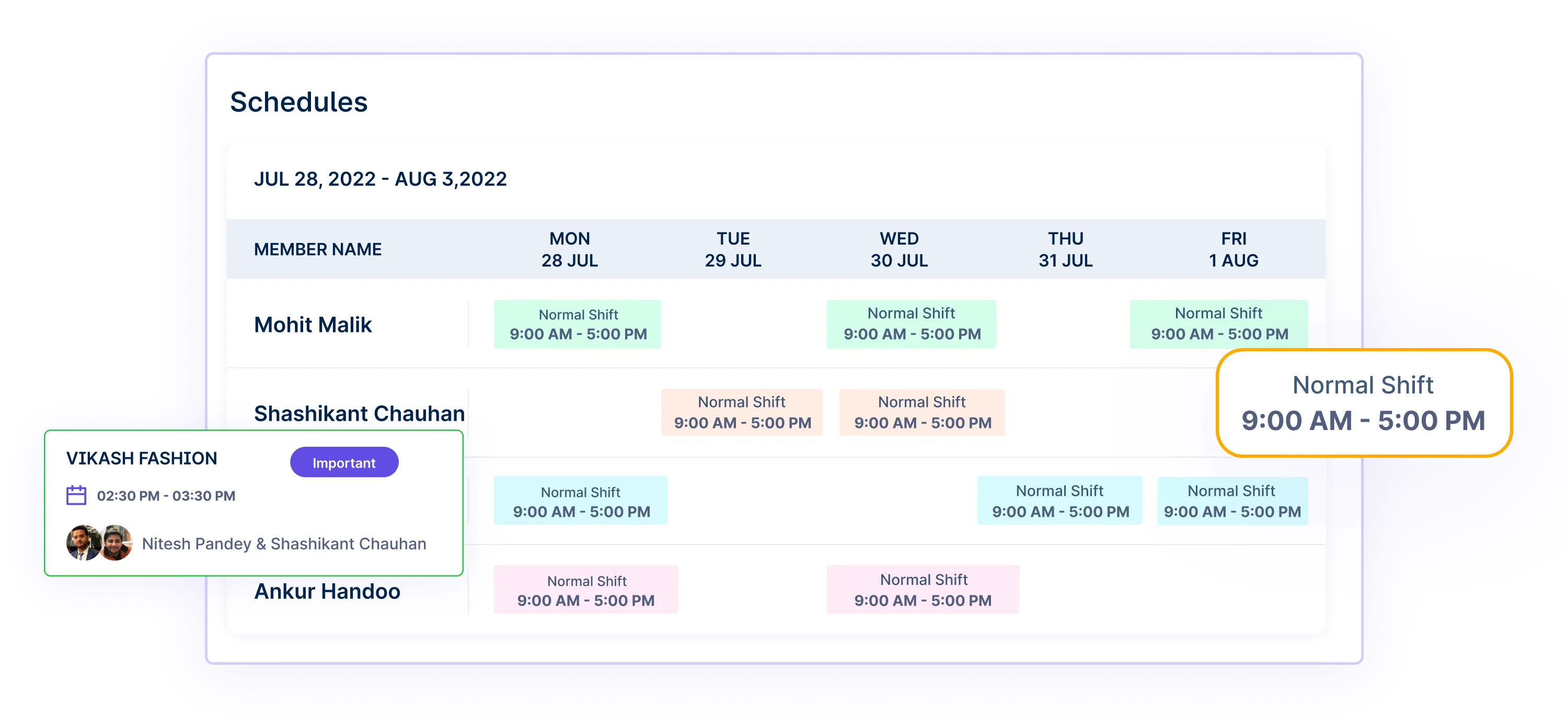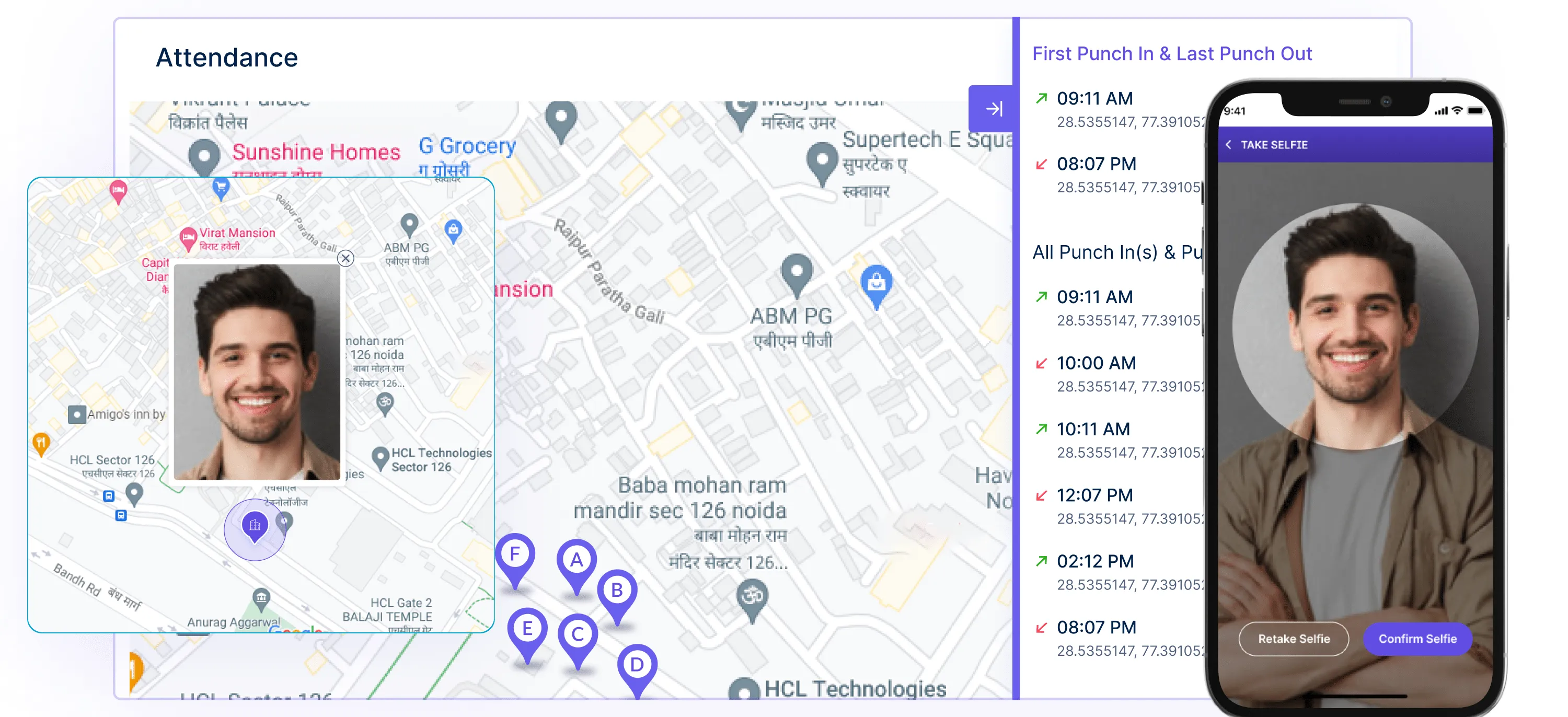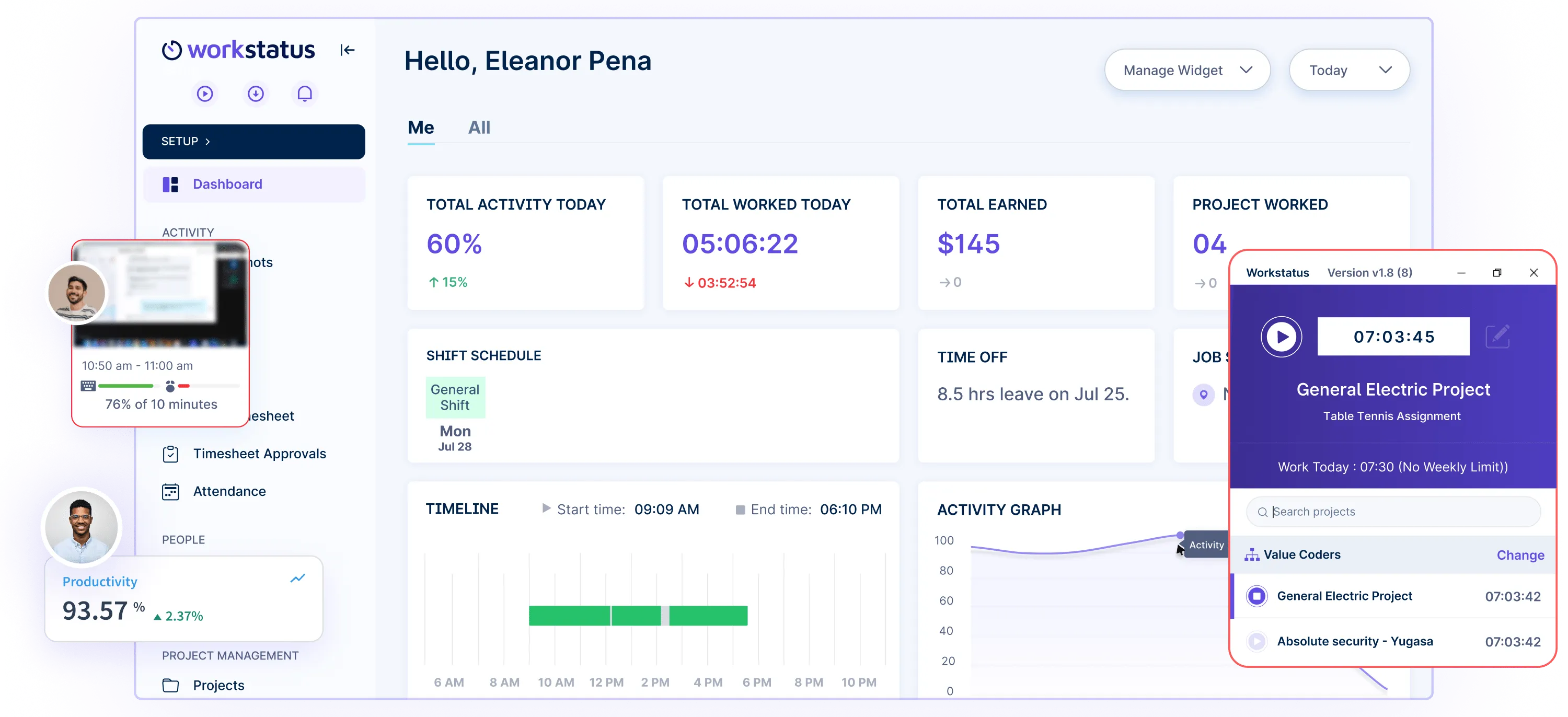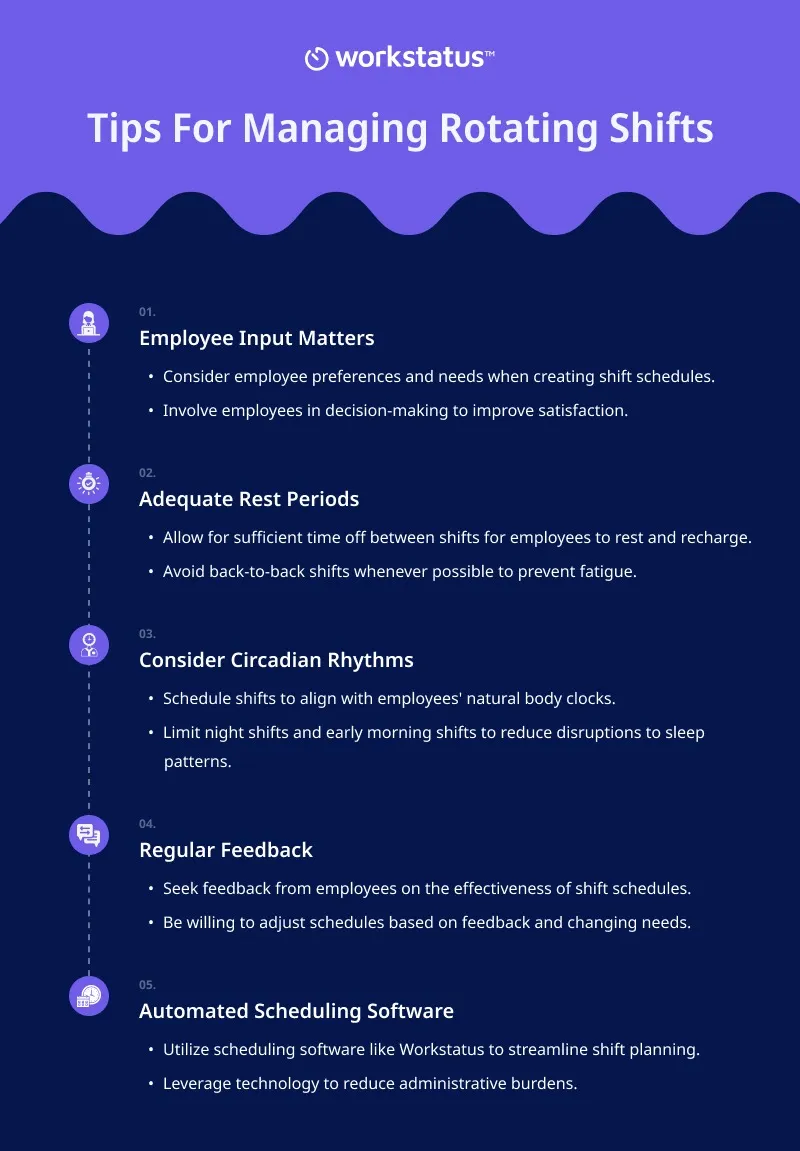Table of Contents
Introduction
The concept of a traditional 9-to-5 job is swiftly becoming a relic of the past.
As businesses strive for flexibility and efficiency, adopting rotating shift schedules is on the rise.
Did you know?
Approximately 25% of workers in the United States are engaged in some form of shift work.
Whether you’re an employer looking to optimize your workforce or an employee navigating the challenges of changing work hours, understanding the dynamics of rotating shifts is crucial.
In this blog post, we will discuss in detail about rotating shifts, exploring their advantages, drawbacks, and best practices that can help strike a balance between productivity and well-being.
Join us as we unravel the complexities of shift schedules and uncover the strategies to make them work for you.
Let’s dive in:
How Do Rotating Shifts Work?
Rotating shifts involve employees working different shifts or schedules varying over time.
It means employees take turns working during different parts of the day or week, including day shifts, evening shifts, and night shifts.
The rotation can follow various patterns, like fixed, slow, or fast rotations, depending on the organization’s needs.
This approach helps ensure 24/7 coverage and can provide flexibility but may also present both personal & professional challenges like scheduling conflicts, inconsistent attendance, sleep patterns, and work-life balance.
The Pros of Rotating Shifts
Here are some major advantages of having rotational shifts:
1. Increased Workforce Flexibility
Rotating shifts can offer increased workforce flexibility by allowing employees to work during different times of the day or night.
This flexibility can benefit those with personal commitments, like caring for family members or pursuing education.
It can also help companies to meet the changing customer demands, ensuring enough employees are available during peak hours.
2. Improved Employee Coverage
You can ensure better coverage throughout the day and night with rotating shifts.
Employees are always available to handle tasks, serve customers, or address emergencies.
It helps companies maintain a high level of service and can be vital in sectors like healthcare, manufacturing, and customer service, where continuous operations are essential.
3. Enhanced Job Variety
Rotating shifts introduce employees to different aspects of their jobs, promoting skill development and job satisfaction.
Employees enhance their experience working on various tasks and interacting with different colleagues, preventing monotony.
This variety can make work more engaging and enjoyable, ultimately contributing to employee retention and motivation.
4. Potential for Reduced Burnout
Rotating shifts can potentially reduce burnout among employees.
By spreading the workload across different hours and days, it prevents individuals from constantly working long, exhausting hours.
It can reduce stress and improve work-life balance and overall well-being.
However, managing rotating shifts effectively prevents burnout & other related challenges.
Anderson, a project manager at an IT company, uses Workstatus to deal with varying employee availability and frequent schedule changes. Workstatus helped him create flexible schedules to ensure optimal coverage. It helped him to boost productivity while promoting a flexible work culture.
The Cons of Rotating Shifts
Here are some major disadvantages of having rotational shifts:
1. Difficult to Create Rotational Schedules
Creating schedules for rotating shifts can be challenging due to the complexity involved in accommodating the varying shift preferences and constraints of multiple employees.
Balancing employees’ needs with the organization’s operational requirements, such as ensuring adequate coverage during peak hours, can lead to intricate scheduling processes.
Additionally, accounting for employee availability, seniority, and specific skill sets further complicates the task, often resulting in increased administrative burden and potential errors in scheduling, which can impact employee satisfaction and productivity.
Here’s how Workstatus can help:
Managing rotating shift schedules can be quite a task due to frequent changes and the need to monitor all employees. This is why it’s essential to utilize shift scheduling software like Workstatus, which aids in efficient shift management.
Workstatus can automate creating, tracking, and managing shifts. Create schedules in just a few minutes. Employees can easily view any shift schedule changes or updates through the app.
Create schedules in just a few minutes. Employees can easily view any shift schedule changes or updates through the app.
2. Disrupted Communication
Working at different times from your coworkers can make it hard to talk and share information.
You might miss important meetings or messages if you’re on a different schedule.
It can lead to misunderstandings and problems at work because good communication is essential for a team to work well together.
3. Allocating Shifts in Bulk or Individually
Creating schedules for rotating shifts is hard because making everyone happy is tough.
You have to figure out when each person can work, what they like, and who has the most experience.
You might try to assign shifts to everyone all at once, but that can make people upset if their preferences aren’t considered.
On the other hand, giving shifts out one by one takes a lot of time and can be a big hassle.
It’s important to find a balance so that people feel good about their schedules, or else they might not be happy at work and could leave their jobs.
Here’s how Workstatus can help:
Workstatus is a complete time and attendance tracking system with shift management, making it simple to maintain rotating shifts.
Effectively distribute shifts in groups or individually. Manage varying weekly shift schedules and easily adjust the number of staff for each shift.
4. Poor Work-Life Balance
Having a schedule that keeps changing can make it tough to plan your life outside of work.
Spending time with your family or doing what you enjoy might be hard.
It can lead to feeling stressed or unhappy because you’re not finding the right balance between your job and personal life.
5. Difficult to Create Multiple Customizable Shift-Related Policies
Designing multiple customizable shift-related policies can be challenging due to the intricate nature of catering to multiple employee preferences and requirements.
The process involves understanding and accommodating various factors such as:
- Employee availability,
- Specific job roles,
- Legal regulations
It can significantly vary across different departments or teams.
Ensuring that these policies are not only flexible but also adhere to the company’s operational standards adds complexity to the task.
Striking the right balance between customization and standardization becomes crucial to create a conducive work environment.
Here’s how Workstatus can help:
Set personalized policies for situations like early departures, alerts, late arrivals, or grace periods based on clock-in and clock-out times.

Administrative approval is required if a staff member clocks in after the grace period.
Best Practices for Managing Rotating Shifts
Read the below infographics to know the best practices for managing rotating shifts:

Now, we will see the various types of rotating shift schedules.
Types of Rotating Shift Schedules
Here are common types of rotating shift schedules:
1. The DuPont Shift Schedule
The DuPont shift schedule comprises four teams operating 12-hour shifts, and its employee rotation plan is intricate.
DuPont’s shift pattern transitions from daytime to nighttime duties over a four-week cycle. For example:
- Four-day shifts, then seven days off
- Three-night shifts, then three days off
- Three-day shifts, then one day off
- Four-night shifts, then three days off
The DuPont system provides employees ample time to rejuvenate by granting several days off. At the end of the rotational cycle, these days off accumulate into a week-long break.
2. Southern Swing Schedule
The Southern Swing rotating shift is a schedule that employs three eight-hour shifts over a month, involving four different teams. Here’s how this employee rotation plan operates:
- Three days off
- Seven-night shifts
- Two days off
- Seven-day shifts
- Two days off
- Seven-day shifts
One of the key advantages of the Southern Swing schedule is that employees are not required to work the longer 10- or 12-hour shifts, as is the case with some other rotating shift schedules.
3. The 2-2-3-2-2-3 Shift Schedule
The 2-2-3-2-2-3 schedule is a rotating shift plan that operates on a 28-day cycle. Within this schedule, 12-hour shifts are alternated following this pattern:
- Two days off
- Two-day shifts
- Three days off
- Two-night shifts
- Two days off
- Three-night shifts
- Two days off
- Two-night shifts
- Three-day shifts
- Two days off
- Two-day shifts
- Three days off
The advantage of this rotational schedule is that employees enjoy regular time off without the need to work for more than three consecutive days.
4. The Pitman Shift Schedule
In the Pitman shift schedule, employees enjoy a break on alternate weekends, allowing them to engage in family and social activities during normal hours. This schedule involves 12-hour shifts with four teams rotating. To prevent employee fatigue, employees typically do not work more than three consecutive days.
For example:
- Three shifts on, followed by two days off
- Two shifts on, followed by two days off
- Two shifts on, followed by three days off
Employees shift their schedules at the end of the two-week cycle, transitioning from day shifts to night shifts and vice versa.
Closing Thoughts
In conclusion, rotating shifts come with both advantages and challenges.
While they offer flexibility and accommodate various employee needs, they can lead to disrupted sleep patterns and potential health issues.
Organizations must implement transparent scheduling practices to maximize the benefits of rotating shifts, prioritize employee well-being, and offer adequate support to mitigate the drawbacks associated with this work schedule.
Striking a balance between flexibility and maintaining employee health is key to effectively managing rotating shifts within any organization.












